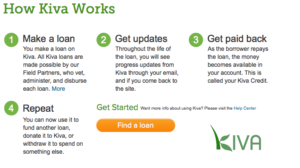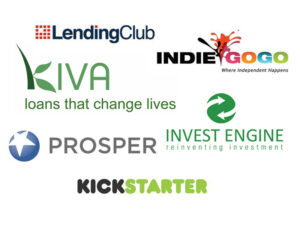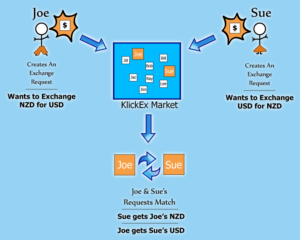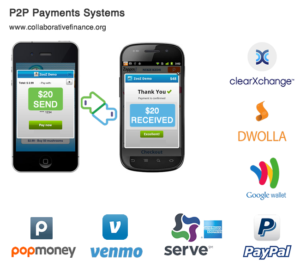ACCESS TO CREDIT
Roughly 4 billion people living in developing countries and emerging economies do not have access to financial services such as credit, savings and insurance.
Formal financial intermediaries, such as commercial banks, usually refuse to serve poor households and micro-enterprises because of the high cost of small transactions, lack of traditional collateral, lack of basic requirements for financing and geographic isolation. By doing so, these institutions ignore the enormous potential in talents and entrepreneurship of this stratum of society. Providing access to financial services will stimulate the independence and self-development of poor households and micro-entrepreneurs. This will help not only to improve poor people’s economic condition, but also to provide a way to maintain or improve their quality of life in the face of uncertainty. Moreover, gaining access to financial services is a critical step in connecting the poor to a broader economic life and in building the confidence for them to play a role in the larger community.
Credit is essential in poor rural economies in a variety of ways. It is required to finance working capital and investment in fixed capital, particularly among farmers too poor to accumulate much saving. It is an important instrument for smoothing consumption, in a context where incomes typically experience large seasonal fluctuations. Moreover, unusual events such as illnesses or weddings often create a pressing need to borrow.
Apart from the intrinsic benefit of being able to weather such shocks, availability of credit reduces reluctance to adopt technologies that raise both mean levels and riskiness of incomes. The credit market thus affects output, investment, technology choices and inequality.
A significant fraction of credit transactions in underdeveloped countries still takes place in the informal sector, in spite of serious government efforts to channel credit directly via its own banks, or by regulating commercial banks. This is largely because poorer farmers lack sufficient assets to put up as collateral—a usual prerequisite for borrowing from banks. Numerous case studies and empirical analyses in a variety of countries have revealed that informal credit markets often display patterns and features not commonly found in institutional lending:
(i) loans are often advanced on the basis of oral agreements rather than written contracts, with little or no collateral, making default a seemingly attractive option
(ii) the credit market is usually highly segmented, marked by long-term exclusive relationships and repeat lending
(iii) interest rates are much higher on average than bank interest rates, and also show significant dispersion, presenting apparent arbitrage opportunities
(iv) there is frequent interlinkage with other markets, such as land, labor or crop
(v) significant credit rationing, whereby borrowers are unable to borrow all they want, or some loan applicants are unable to borrow at all.
There are a number of different theoretical approaches that attempt to explain some or all of these features. Though differing in specific mechanisms proposed, they share a common general theme: that the world of informal credit is one of missing markets, asymmetric information, and incentive problems. Despite these theoretical approaches there is a clear need to understand the functioning of these informal systems and the ways in which they have co-opted low-income borrowers. This would help develop effective programmes that target such group and take all local and potential resources into account.
INFORMAL CREDIT MARKETS
Two key facts of urban informal credit markets (ICMs) have been recognized by various authors – one, that informal credit largely (though not completely) serves the differing needs of low-income families; two, that under the current circumstances in which global/national credit markets function, informal credit suppliers function at a disadvantage and have several shortcomings. This situation is compounded by commercial banks which do not find low-income families viable or “bankable”.
Various approaches have been attempted – from the promulgation by banks of special and targeted credit programmes towards the poor, to active legislation which has attempted to curb the functioning of ICM suppliers. This has only worked to adversely affect the credit availability for the urban poor. The basic premise Collaborative Finance stands on is that the functioning of the ICM plays an important and beneficial role for the needs of low-income families. There is a clear match between their credit needs and the quality and quantity of credit supplied by the ICM.
Informal credit has been serving the needs of the population long before the advent of popular banking system, but a good definition still needs to be developed.
The wide variety of informal finance suppliers vary not only in their organizational and operational aspects, but also by geographical region, share of the financial market etc. But it is precisely this heterogeneity that enables the informal savings and credit activity to profitably reach those income-groups not served by commercial banks and other financial institutions. It is their informaility, adaptability and flexibility of operations – characteristics which reduce their transactions costs and confers upon them their comparative advantage and economic rationale. Informality is characterized by highly personalized loan transactions entailing face-to-face dealings with borrowers and flexibility in respect of loan purpose, interest rates, collateral requirements, maturity periods and debt rescheduling.
The informal credit market represents a huge network for the supply and demand of credit outside the purview of the government, estimated by various studies as 33-76 percent of the entire money markets of Asian countries. In the absence of a concerted action and inability of the government to serve the needs of the low-income groups, the key lies in recognizing and supporting the existing network of credit delivery in such settlements and finding ways and means to create an enabling environment where they can function.
Thus, the question is not “how to link banks and the informal credit market” but “how to create an environment where banks and the informal credit market can link”. There is a need to understand the various actors involved in the process of credit mobilization and disbursal, and their actions, motivations and expectations. The interconnectedness of such actors/activities is important to ensure that resources are channeled to the most needy, and overlap, duplication and irrelevant actions are avoided.
What are the features of informal credit that make it attractive to low income households?
There are essentially 14 such features:
- It does not require a license – most informal suppliers work without an operating license to supply money.
- It facilitates very small savings – small amounts that can be saved daily.
- It is non-profit motivated – profit, if any, is ploughed back into the community and its members.
- It has strong organizational structures – community initiatives are usually part of the well setup people’s organization.
- It has multiple proprietorship – proprietorship lies not with one or two persons, but the group as a whole.
- It does not need collateral – collateral and guarantees of repayment is ensured by, for example, peer pressure.
- It provides localized services – at the door step of the household, or within the community itself.
- It has specific borrowers identified – most of whom are members of the community.
- It has personalized services – the terms and conditions under which loans are given are tailor-made to the needs of its members.
- It has close informational links – between members that ensure repayment.
- It has high repayment rates – the average repayment rates for informal initiative has been above 95%.
- It facilitates reciprocation of credit disbursal – there is a give-and-take attitude, where borrowers and lenders interchange their roles.
- It is not regulated by the central bank – with respect to limits and restrictions, reporting requirements etc.
- It encourages community participation in other fields of development – the participatory approach of informal initiatives is easily replicable to a wide range of other community development issues.
There are clearly many important issues in the design of savings and credit programmes that can take into account the organizational and operational features of informal credit operations that would ensure its success. Such suppliers, including money lenders, rotating savings and credit association (ROSCAs), pawn brokers, friends/relatives/neighbours, and community/people’s organizations, are discussed in greater detail to glean implications for programme design.
MICROFINANCE
Since the 1950s, both the public and private sector have made efforts to provide financial services to the poor. The success of the Marshall Plan in the reconstruction of Europe after World War II inspired the newly-emerging multilateral and bilateral donors to use capital transfer as the main instrument of development. Large targeted and subsidised credit programs were designed and implemented mainly through state-owned specialised development banks and private commercial financial entities.
A few early pioneers – such as the Badan Kredit Desa village banks and the Bank Dagang Bali in Indonesia, Grameen Bank in Bangladesh, and various NGOs, credit unions, and co-operatives in a variety of countries – led the way in developing access to credit for the under-served through microcredit. During the 1970s, these institutions developed lending methodologies suitable for low-income clients in mostly urban and sometimes rural areas, demonstrating that microcredit could be delivered with a high recovery rate. The institutions provided loans to poor entrepreneurs for investment in micro and small businesses, enabling them to generate and accumulate assets, raise household incomes, and improve family welfare, as well as the social and economic status of women.
By the 1980s, numerous institutions in many developing countries were providing microcredit. However, a business model based on credit alone limited the radius of action with respect to funding, financial sustainability and outreach of credit institutions. The importance of domestic resources and savings potential of the poor and non-poor is one of the great rediscoveries during the 1980s. Microcredit was extended to microfinance, comprising not only loans, but also savings, insurance, transfer systems and other financial products targeted at low-income clients. This has become the foundation of strong growth of the (still few) microfinance institutions (MFIs), among others Bank Rakyat in Indonesia, Grameen bank in Bangladesh and Bancosol in Bolivia.
Toward the end of the 20th century, many financial markets in developing countries and – especially – emerging economies improved significantly. Financial sector reform resulted in heightened market determination of interest rates, higher investment efficiency, increased banking competition, and a wider offering of financial products. However, most of these changes had positive effects only in urban markets. Rural financial markets generally remained underdeveloped, shallow and non-competitive. This duality in financial sector development resulted in limited growth and dynamism of the rural sector and raised policy concerns about income distribution and balanced economic growth.






